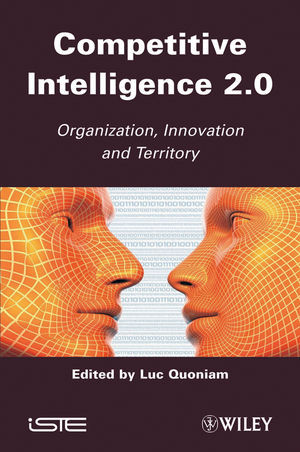Product desciption
Competitive Intelligence 20 Organization Innovation And Territory Luc Quoniam by Luc Quoniam 9781118603079, 9781848213050, 1118603079, 1848213050 instant download after payment.
The recent “concept of 2.0", a consequence of "Web 2.0", discusses the emergence of a new style, emancipated from the Web, which finds applications in all areas of social activity: management, innovation, education , organization, territory, etc.
This book considers the implications of the changing paradigm for competitive, economic and territorial intelligence applied to innovation, value creation and enhancement of territories. Competitive intelligence is therefore in the "2.0" and its values: perpetual beta, user-generated content, social relations, etc., horizontality, a renewed legitimacy.
This book, collecting contributions from international experts, testifies to the heterogeneity and richness of possible approaches. It provides a totally new way of evaluating the impact of 2.0 with concrete examples, while analyzing the theoretical models allowing the reader to develop in other contexts the described cases of success.Content:
Chapter 1 Competitive Intelligence 2.0 (pages 1–21):
Chapter 2 Management 2.0 (pages 23–43):
Chapter 3 Sustainable Development 2.0 (pages 45–71):
Chapter 4 Corporate Education and Web 2.0 (pages 73–91):
Chapter 5 Marketing 2.0 (pages 93–115):
Chapter 6 Parallax: Mindset 2.0 (pages 117–137):
Chapter 7 Competitive Intelligence 2.0 Tools (pages 139–160):
Chapter 8 Patent Information 2.0, Technology Transfer, and Resource Development (pages 161–178):
Chapter 9 Industrial Property (pages 179–194):
Chapter 10 Innovation, Serendipity 2.0, Filing Patents from Biomedical Literature Exploration (pages 195–217):
Chapter 11 Processing Business News for Detecting Firms' Global Networking Strategies (pages 219–239):
Chapter 12 Information Property and Liability in the 2.0? (pages 241–259):
Chapter 13 Territory and Organizational Reputation 2.0 (pages 261–284):
Chapter 14 Triple Helix and Territorial Intelligence 2.0 (pages 285–313):
Chapter 15 Regional Development 2.0 (pages 315–332):
Chapter 16 Government Strategies of Territorial Intelligence 2.0 (pages 333–350):
Chapter 17 University (pages 351–361):


